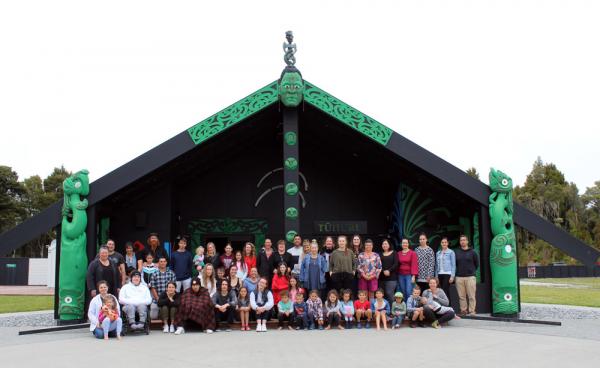KID REPORTERS’ NOTEBOOK
Revitalizing the Māori Language
Hine with language instructor Paulette Tamati-Elliffe, KMK’s program leader
Kia ora! Ko Hinekerangi tōku ingoa. Nō Aotearoa au.
What did you just read? I said my name and where I’m from in a language called Te Reo Māori. For generations, the langage was spoken by the Māori, indigenous Polynesian people of New Zealand.
In recent decades, Te Reo has faded. But a group called Kotahi Mano Kāika (KMK, for short), is working hard to revitalize the language, particularly the Kai Tahu dialect.
I recently spoke with Paulette Tamati-Elliffe, KMK’s program leader. We met at the Arowhenua Marae, the principal Māori settlement in Temuka, New Zealand.
Tamati-Elliffe was conducting a Te Reo immersion course. She was doing much more, she said, than just teaching a language. “It’s the connection to our ancestors,” she told me. “It is a taonga [gift], and if we lose that, we lose our special flavor.”
Te Reo is used for traditional practices, such as passing down stories through wood carvings and weavings. If the language is lost, the practices will disappear, too. KMK is striving to ensure that local families use Te Reo as their everyday language so that it becomes alive again.
Indigenous Māori people only make up only about 16.5% of the population of New Zealand, but their culture plays a huge role in the country. Most other New Zealanders are of European descent.

Participants at a weekend workshop that helps families like Hine’s connect with their Māori roots
“A UNIQUE DIALECT”
By 1980, when revitalization efforts began, fewer than 20% of the Māori population was fluent in Te Reo. In 2000, KMK began to focus on the Kai Tahu dialect.
“A group of Māori enthusiasts had been researching Kai Tahu Reo,” Tamati-Elliffe explained. “While studying the old manuscripts and writings of the past, they quickly recognized that we had a unique dialect.”
KMK hosts weekend Te Reo courses. I have attended several of the classes, where I learned a lot and made new friends.
Tamati-Elliffe believes that the program is helping to create future leaders. “Learning the language has underpinned an increase in overall well-being and connection,” she explained.
When KMK was founded, the goal was to have 1,000 families speaking Kai Tahu Reo as their primary language by 2025. The group is well on its way.
Tamati-Elliffe said that her first grandchild is due any day. She sees teaching Te Reo as “playing a part in the future of all my mokopuna [grandchildren] to come. By learning our language we are maintaining and restoring our culture.”
